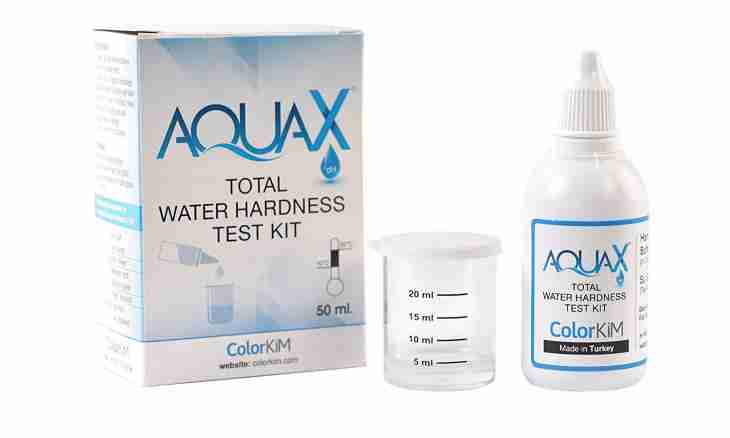Water is called hard if it contains a large amount of salts of magnesium and calcium. Such water in life is usually very much not loved because it forms a layer of scale on teapots and pans and does not allow soap to foam.
It is required to you
- The methodical edition in analytical chemistry.
Instruction
1. Hardness of water happen two types: carbonate (temporary) and not carbonate (constant). The first leaves by boiling (about about an hour). After that the white deposit (calcium carbonate) and carbon dioxide is formed. The second is eliminated more difficult: or chemically, or by distillation. The general hardness of water are defined by the sum of constant and temporary zhestkost. In chemistry the rigidity is expressed the sum of milliequivalents of ions of calcium and magnesium in 1 l of water. One milliequivalent of rigidity is equal to 20.04 milligrams of ions of calcium or 12.16 milligrams of ions of magnesium in 1 l of water.
2. One of ways of measurement of rigidity - titration. For its carrying out it is necessary to place in two conic flasks on 100 ml of the studied water, 5 ml of buffer solution, on 1 ml of sulfide of sodium and on 5-6 drops of the indicator of a chromogen of black ET-00 (it is necessary to use measured pipettes). After hashing, solutions have pink color.
3. Then the received mix is titrated Trilony B, using the microburette. Trilon of B is added carefully, on droplets, before receiving blue coloring. Further it is noted how many ml of Trilon of B went for titration to within the 100-th. Two tests are titrated for purity of an experiment.
4. Average volume is considered the following step, using a simple formula Vcp = (V1+V2)/2 where V1 is Trilon's volume of the B who went for titration of solution in the first flask, ml, V2 is Trilon's volume of the B who went for titration of solution in the second flask. And the last that needs to be made in this method is to consider rigidity on formula Zh = (Vcp*N*1000)/V where Vcp - the average volume of Trilon of B which went for titration in two flasks, the ml (counted on the above-stated formula), N - normal concentration of Trilon of B, 1000 - recalculation on 1 l of water, V - the volume of the studied water, ml. If it is necessary to express rigidity in degrees, then the received number should be increased by coefficient 2.8.
5. At rigidity up to 4 mg-ekv/l water is considered soft, from 4 to 8 mg-ekv/l of average rigidity, from 8 to 12 mg - ekv/l rigid and over 12 mg-ekv/l especially rigid. Of course, in the conditions of modern laboratory the hardness of water can be measured not only by titration, but also various devices, for example, the conductometer and electronic devices. If there is a possibility of work on such equipment, then it is simpler, more effective and more precisely. But also the method of titration is rather exact and simple.

